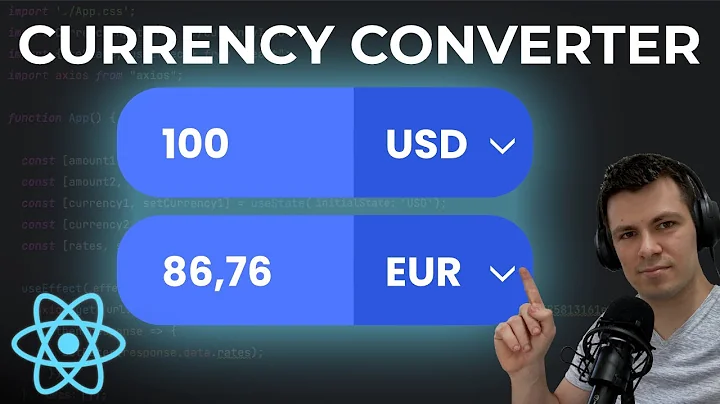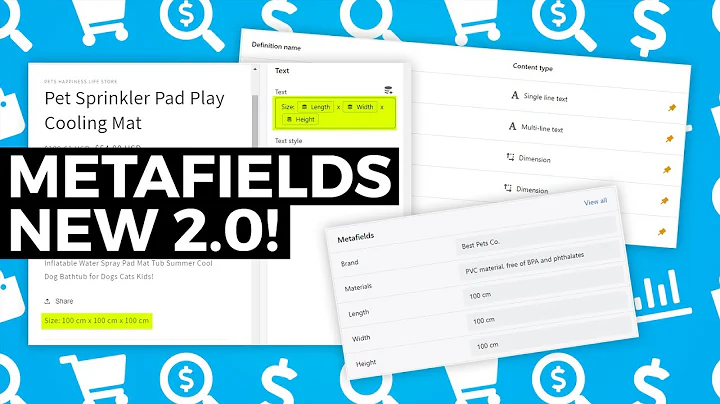A First Look at the New GA4 Shopify Connector: Is It Worth It?
Table of Contents:
- Introduction
- Native Integration with Google Analytics 4 in Shopify
- Benefits of Native Integration
- Limitations of Native Integration
- Setting up Google Analytics 4 in Shopify
- Testing the GA4 Connector in Shopify
- Understanding E-commerce Data in GA4
- Missing Events in Native Integration
- Using Third-Party Plugins for Advanced Tracking
- Conclusion
Article: The New Integration for Google Analytics 4 in Shopify: A First Look
Introduction
The importance of tracking and analyzing data for e-commerce stores cannot be overstated. With accurate data, businesses can make informed decisions and optimize their online presence. Google Analytics is a powerful tool that provides valuable insights into website performance. Recently, a native integration for Google Analytics 4 (GA4) in Shopify was released, offering an easy way for Shopify store owners to gather crucial data. In this article, we'll take a first look at this new integration, its benefits, limitations, and explore the possibilities it offers for e-commerce tracking.
Native Integration with Google Analytics 4 in Shopify
The native integration for GA4 in Shopify allows store owners to seamlessly connect their Google Analytics account without the need for additional payment or complex setup processes. By simply entering their tracking ID, Shopify automatically integrates GA4, enabling users to gather essential data for their e-commerce stores. Native integrations such as this provide convenience and simplicity, ensuring an efficient and reliable analytics solution for Shopify users.
Benefits of Native Integration
The primary benefit of the native integration is its ease of use. With just a few clicks, store owners can have GA4 installed on their Shopify stores. This integration offers the best compatibility and functionality specifically designed for the Shopify platform. Furthermore, it eliminates the need to manually customize the implementation, as the integration takes care of the necessary configurations automatically. This means that even beginners in tracking can take advantage of GA4 with minimal effort.
Limitations of Native Integration
While the native integration provides a convenient solution, it does come with some limitations. One of the drawbacks is the lack of customization options. Unlike alternative methods, the native integration restricts users from implementing advanced tracking techniques or tailoring the implementation to their specific needs. This limitation might be a hindrance for businesses that require more control over their tracking implementation.
Setting up Google Analytics 4 in Shopify
To set up GA4 in Shopify, store owners need to navigate to the Google Channel app and connect their Google account. After granting the required permissions, they can select the existing GA4 property or create a new one. Once connected, GA4 is installed on the Shopify store with a simple click. This streamlined process eliminates the manual entry of UA codes, making it hassle-free for users.
Testing the GA4 Connector in Shopify
After setting up GA4, it's essential to test the integration to ensure data is being accurately sent to Google Analytics. Developers can utilize tools such as the GTM Debugger to view the data being transmitted. By reloading the page, they can observe the automatic firing of events, including the crucial page view event. Checking the debug view in GA4 confirms the successful data transmission. This initial testing validates the correct installation of the GA4 connector.
Understanding E-commerce Data in GA4
GA4 provides valuable e-commerce data that is essential for optimizing an online store. By implementing e-commerce measurement and setting up relevant data layers, store owners can capture events such as viewing item lists, selecting items, and more. The documentation provides detailed information on the various e-commerce events that can be tracked. These events, including purchases, view items, and checkout actions, offer valuable insights into customer behavior and can be accessed through the GA4 reports.
Missing Events in Native Integration
While the native integration covers essential e-commerce events, some crucial events might be missing. For example, the view list item event, which displays the list of categories and products shown to users, might not be available. Other missing events include add to wishlist, select promotion, and view promotion. Although the native integration captures a significant portion of events, store owners looking for a complete tracking solution should consider alternative methods.
Using Third-Party Plugins for Advanced Tracking
For those seeking more advanced tracking capabilities and customization options, third-party plugins offer a solution. By installing the right plugin or setting up data layers through Google Tag Manager, store owners can have full control over their tracking implementation. This allows for customizations tailored to their specific requirements, enhancing the accuracy and granularity of the data collected. While this approach requires additional setup steps, it offers businesses the opportunity to optimize their tracking according to their unique needs.
Conclusion
The new integration for Google Analytics 4 in Shopify provides an accessible solution for e-commerce tracking. With its native integration, Shopify store owners can effortlessly connect their Google Analytics account and gather essential data for optimization. While the native integration offers simplicity and convenience, it has its limitations in terms of customization. Businesses seeking a more advanced tracking solution should explore third-party plugins or custom implementations. By leveraging GA4 and utilizing the right tools, Shopify store owners can gain valuable insights into their e-commerce performance and make data-driven decisions to boost their online success.
Highlights:
- Native integration for Google Analytics 4 in Shopify provides a simple and convenient way to gather crucial data for e-commerce stores.
- The integration eliminates the need for manual customization, making it suitable for beginners in tracking.
- Limitations of the native integration include the lack of customization options for advanced tracking techniques.
- Setting up Google Analytics 4 in Shopify requires connecting the Google Channel app and selecting the desired property.
- Testing the GA4 connector ensures accurate data transmission to Google Analytics.
- GA4 captures important e-commerce events, offering insights into customer behavior and store performance.
- Some crucial events, such as view list item and select promotion, might be missing in the native integration.
- Third-party plugins or custom implementations provide advanced tracking capabilities and customization options.
- Choosing the right approach depends on the specific needs and goals of the Shopify store owner.
- Overall, the native integration is a convenient solution for basic tracking, but additional options are available for more advanced requirements.
FAQ:
Q: Can I customize the native integration of Google Analytics 4 in Shopify?
A: The native integration has limitations in terms of customization. For advanced tracking and specific customization needs, using third-party plugins or custom implementations is recommended.
Q: What e-commerce events are captured by Google Analytics 4?
A: Google Analytics 4 captures various e-commerce events such as view items, add to cart, purchases, and checkout actions. These events provide valuable insights into customer behavior and store performance.
Q: Are there any missing events in the native integration?
A: Yes, certain events like view list item, select promotion, and view promotion might be missing in the native integration. Alternative methods or third-party plugins can be used to capture these events.
Q: Can I still use Google Tag Manager with the native integration?
A: The native integration does not allow as much flexibility as Google Tag Manager. If advanced tracking and customization are desired, using Google Tag Manager with appropriate data layers is recommended.
Q: Is the native integration suitable for beginners in tracking?
A: Yes, the native integration provides a user-friendly solution for beginners in tracking. It simplifies the setup process and eliminates the need for manual customization.






















